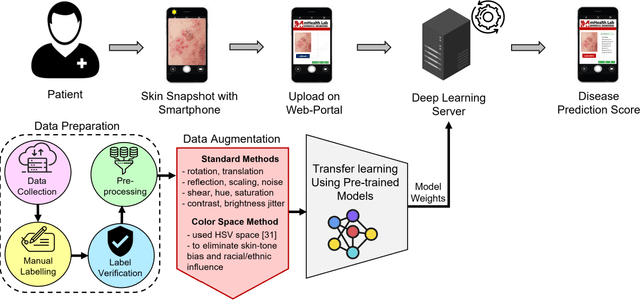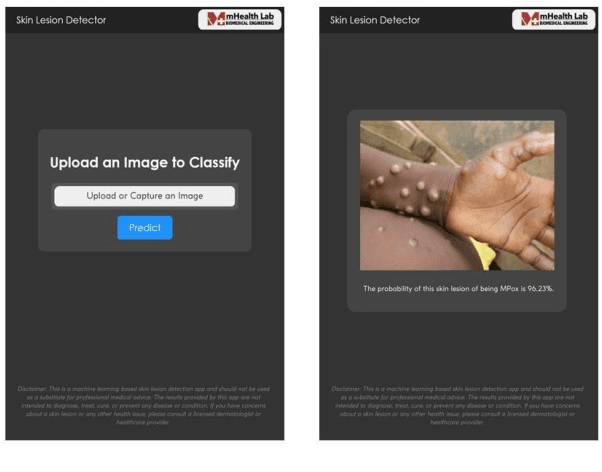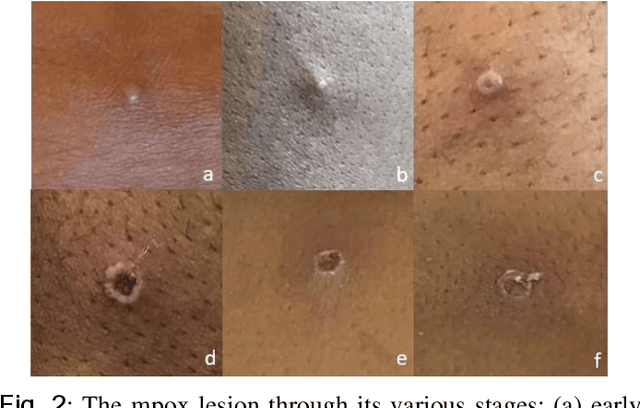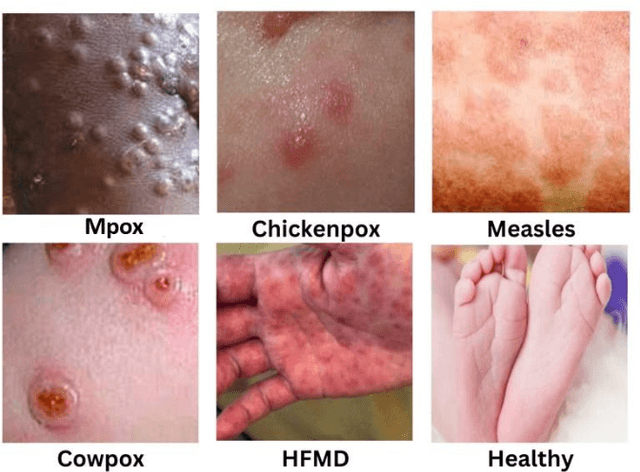Anzirun Nahar Asma
A Web-based Mpox Skin Lesion Detection System Using State-of-the-art Deep Learning Models Considering Racial Diversity
Jun 25, 2023



Abstract:The recent 'Mpox' outbreak, formerly known as 'Monkeypox', has become a significant public health concern and has spread to over 110 countries globally. The challenge of clinically diagnosing mpox early on is due, in part, to its similarity to other types of rashes. Computer-aided screening tools have been proven valuable in cases where Polymerase Chain Reaction (PCR) based diagnosis is not immediately available. Deep learning methods are powerful in learning complex data representations, but their efficacy largely depends on adequate training data. To address this challenge, we present the "Mpox Skin Lesion Dataset Version 2.0 (MSLD v2.0)" as a follow-up to the previously released openly accessible dataset, one of the first datasets containing mpox lesion images. This dataset contains images of patients with mpox and five other non-mpox classes (chickenpox, measles, hand-foot-mouth disease, cowpox, and healthy). We benchmark the performance of several state-of-the-art deep learning models, including VGG16, ResNet50, DenseNet121, MobileNetV2, EfficientNetB3, InceptionV3, and Xception, to classify mpox and other infectious skin diseases. In order to reduce the impact of racial bias, we utilize a color space data augmentation method to increase skin color variability during training. Additionally, by leveraging transfer learning implemented with pre-trained weights generated from the HAM10000 dataset, an extensive collection of pigmented skin lesion images, we achieved the best overall accuracy of $83.59\pm2.11\%$. Finally, the developed models are incorporated within a prototype web application to analyze uploaded skin images by a user and determine whether a subject is a suspected mpox patient.
 Add to Chrome
Add to Chrome Add to Firefox
Add to Firefox Add to Edge
Add to Edge